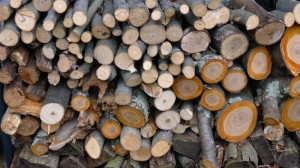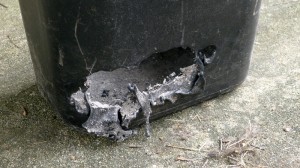Shelter
Shelter is one of those things that many of us take for granted. You need to be safe from the winds, the rain, the storms, and whatever else nature can throw at you. If 70 mile-per-hour winds knock a tree into your bedroom, you’ve suddenly got a compromised shelter. If your shelter is compromised, take steps to find new shelter, fix what you have, or both. Many survival schools teach students to make a shelter before even starting a fire when lost in the woods. In our case, our house was thankfully unscathed, but there were many people sleeping in church, firehouse, and Red Cross shelters in our state. Don’t be afraid to use such services if you need them.
Warmth

Every day I would keep the fire running and the house would stabilize at about 58-60 degrees Fahrenheit. When I would wake up in the morning, the house would be back down to 50 degrees or lower. It was a constant, daily battle to keep the house warm using only the wood-burning stove. After the first few days the novelty wore off, after which it felt like we were working to survive, which to an extent, we were.
When the wood ran out, I had to cut up more with the chainsaw. Every other day I would cut up enough wood for two days. If that seems short-sighted, consider that two day’s worth of wood turned out to be a full firewood holder that measured 2’x4’x8′. Yes, we burned roughly a half-cord of wood every two to three days. On day 11 I woke up to a 46-degree house, due to the outside temperature being a brisk 25. That was too cold, I was too tired, and I’d had enough.
Lesson learned: Burning wood to keep from freezing can consume a lot more wood than lighting an occasional fire to set the mood. Know how much you really need and stock up before the storm.

Lesson learned: have a metal ash bin for inside and a metal ash can with a lid for outside. Using a fireplace or wood-burning stove is a different experience when you’re using it every day. Be safe.
Donate: PayPal Crypto:
ETH: 0x0AC57f8e0A49dc06Ed4f7926d169342ec4FCd461
Doge: DFWpLqMr6QF67t4wRzvTtNd8UDwjGTQBGs
